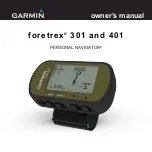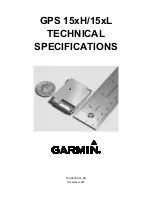
24
Whiteline
The Fishfi nder 320C can help you to determine if the bottom is hard or soft. When the sonar
soundwaves are refl ected back by the bottom, a hard bottom will return a stronger signal than a soft bottom.
A thin whiteline indicates a softer bottom while a thick whiteline indicates a harder bottom. Normally, a
red line is used to show the point where water meets the bottom. This line will follow the bottom contour,
along with any signifi cant objects lying on the bottom. The unit uses the whiteline function to make this
bottom layer information easier to
distinguish.
With the Fishfi nder 320C,
active whiteline helps accentuate
where strong signals are located,
which make bottom type deter-
mination easier. The example to
the right shows the bottom return
with and without the whiteline
activated.
Thermoclines
One of the unique features offered by Garmin is
See-Thru technology. See-Thru technology allows the
Fishfi nder 320C to “see” through thermoclines and
helps locate fi sh where they live; and fi sh love
thermoclines! A rough defi nition of a thermocline is a
break in water where the water temperature changes
faster than the water above it. Thermoclines are shown
as the weakest colors (see pg. 9)
)
Whiteline can also help you to determine the type of bottom struc-
ture that is displayed on the graph. By determining the hardness
of the structure, you can make a better informed decision on the
type of structure.
Structure is hard—
probably a rock or stump
Structure is soft—
probably a mud pile
Thermocline
On the Water
Whiteline and Thermoclines
Whiteline Turned Off
Hard Bottom
Whiteline
Soft Bottom
320C Manual.indd 24
3/11/2003, 11:37:30 AM







































